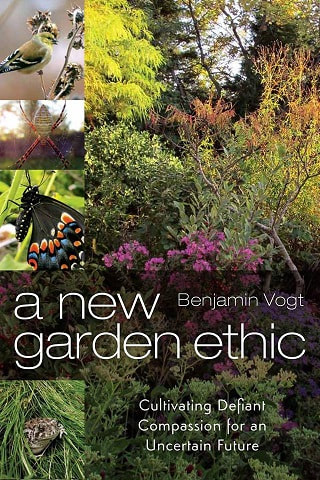I talk a lot about cues to care in wilder, native plant habitat gardens we all love. Cues to care are signals to other folks that the landscape is intentional and being cared for and is open to humans being in it (aka it's physically and aesthetically accessible). So think wide lawn or mulch paths free of weeds, a bench, an arbor, a tasteful sculpture, a water fountain, a fire pit, a lawn circle, etc.
But another cue to care is just keeping up with home maintenance, too -- nothing says dilapidated more than a mailbox hanging on by one screw or siding with paint peeling off. If we can create well-maintained hardscapes, then the wilder softscape or greenscape will be easier to interpret and understand.
I can't begin to tell you how many images I've seen of prized gardens where the landscape and structures look, well, uncared for. While some things are simple fixes -- mulching paths, cutting down tall weeds reaching over sidewalks -- many folks will look to railing, windows, sidewalks, and any number of issues on nearby structures to both read the intention of the land owner and make up their minds of what's going on in the landscape. If the house has problems, that's evidence that the garden is a problem, too. The owner just doesn't care.
We can and should go further, of course, looking to the garden specifically. Let's take out aggressive plants, design in masses and drifts (and manage to keep those masses and drifts by, yes, killing our darlings), adding plants when holes open up, making sure flower succession is continuous, not having tall (over 4' in front beds) or leaning plants or plants that touch people on the sidewalks, et cetera. Signs always help, too.
This isn't rocket science. These are small things that show to others -- like weed enforcement officers -- that this "something different" is on purpose, it is loved, and it is a place for humans and wildlife to meet safely. If we're going to change minds we have to meet people in the middle, even if we are anxious for everyone to quickly come on over to the wild side as we face unprecedented climate disruption. Humans are slow to change, slow to rethink, and slow to act, but we shouldn't be giving our neighbors easy reasons to dismiss natural gardens -- that's clearly our fault if we do. How many examples of wilder, natural landscapes do people see compared to manicured, simplified, lawn-dominate landscapes in the course of just one day? It's a 100-1 battle where our frame of reference of what's acceptable and professional is skewed. Your garden matters. Show that it does.



 RSS Feed
RSS Feed

